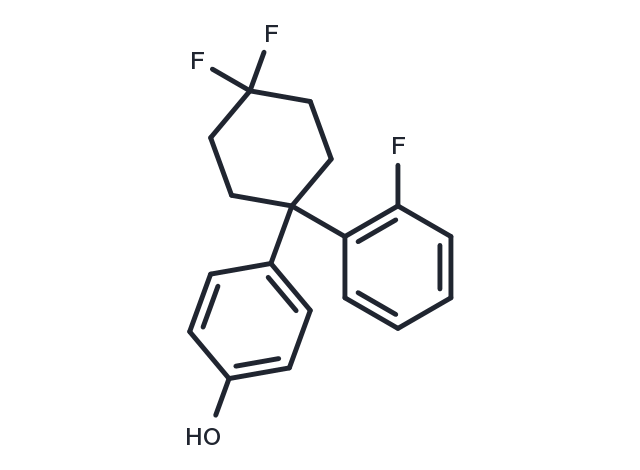store at low temperature
Powder: -20°C for 3 years | In solvent: -80°C for 1 year

AC-186 is a nonsteroidal estrogen receptor β (ERβ) agonist with different affinities for ERβ and ERα, with an EC50 of 6 nM for ERβ and 5000 nM for ERα. AC-186 has neuroprotective activity and has been used in the study of Parkinson's disease.

| Pack Size | Availability | Price/USD | Quantity |
|---|---|---|---|
| 1 mg | In stock | $ 81.00 | |
| 5 mg | In stock | $ 129.00 | |
| 10 mg | In stock | $ 213.00 | |
| 25 mg | In stock | $ 342.00 | |
| 50 mg | In stock | $ 488.00 | |
| 100 mg | In stock | $ 712.00 | |
| 500 mg | In stock | $ 1,460.00 | |
| 1 mL * 10 mM (in DMSO) | In stock | $ 167.00 |

| Description | AC-186 is a nonsteroidal estrogen receptor β (ERβ) agonist with different affinities for ERβ and ERα, with an EC50 of 6 nM for ERβ and 5000 nM for ERα. AC-186 has neuroprotective activity and has been used in the study of Parkinson's disease. |
| Targets&IC50 | ERβ:6 nM (EC50), ERα:5000 nM (EC50) |
| In vitro | In LNCaP cells, AC-186 (10 μM; 72 hours) inhibits the growth of LNCaP cells[1]. |
| In vivo | In male Sprague-Dawley rats weighing 225-250 g, AC-186 (10 mg/kg; s.c.; once) prevented motor, cognitive, and sensorimotor gating deficits and mitigated the loss of dopamine neurons in the substantia nigra, but had no effect in females[1]. |
| Synonyms | AC186, AC 186 |
| Molecular Weight | 306.32 |
| Formula | C18H17F3O |
| CAS No. | 1421854-16-1 |
store at low temperature
Powder: -20°C for 3 years | In solvent: -80°C for 1 year
DMSO: 80 mg/mL (261.16 mM), Sonication is recommended.
You can also refer to dose conversion for different animals. More
bottom
Please see Inhibitor Handling Instructions for more frequently ask questions. Topics include: how to prepare stock solutions, how to store products, and cautions on cell-based assays & animal experiments, etc.
AC-186 1421854-16-1 Endocrinology/Hormones Estrogen/progestogen Receptor AC186 AC 186 inhibitor inhibit
